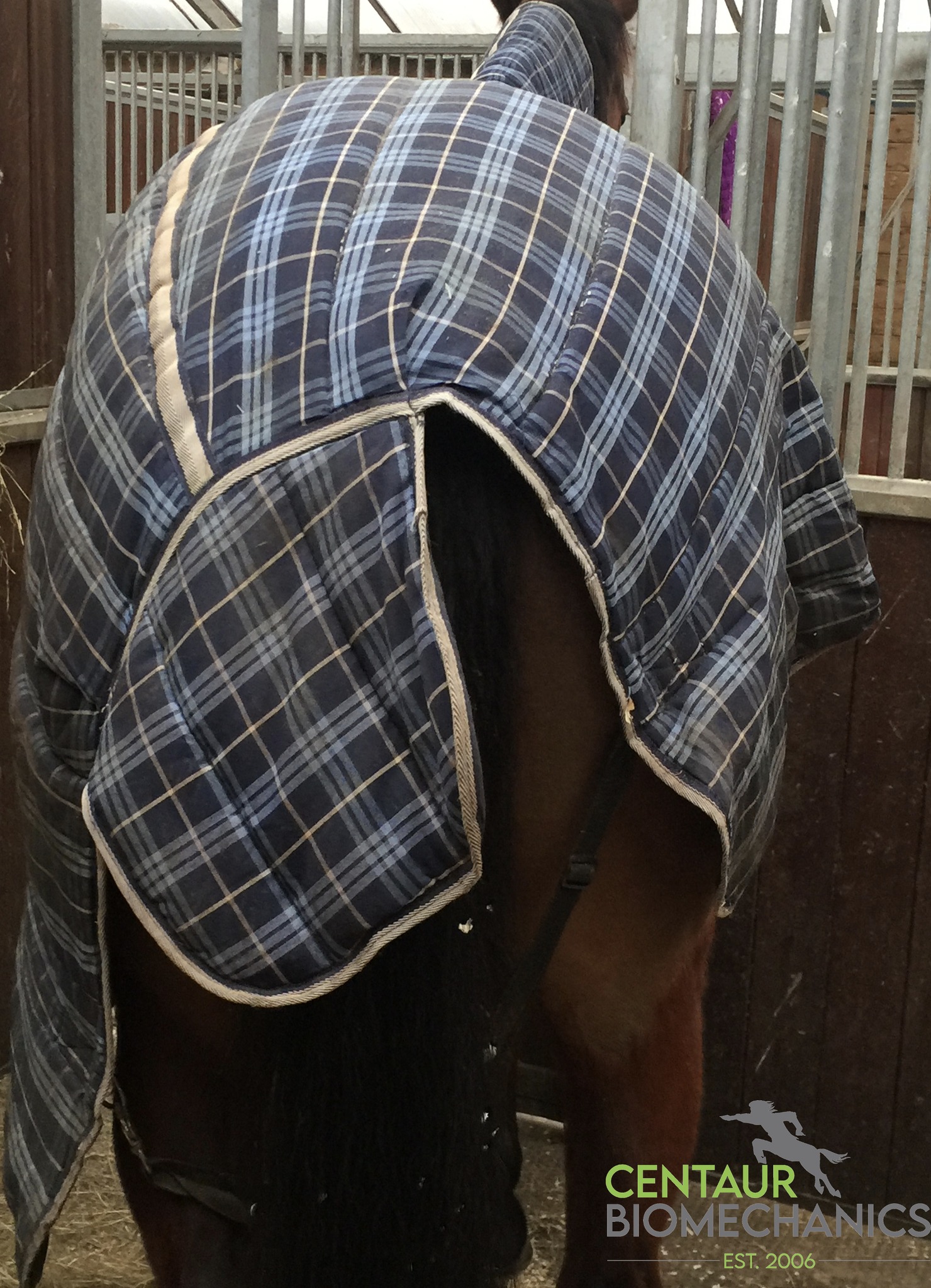
For over 15 years we have been quantifying the complexities of horse, saddle and rider interaction, in particular the primary factors associated with saddle slip…in the context of saddle slip, as written previously, based on multiple scientific studies, the horse is the primary factor (1-4), and the saddle and rider follow the movements of the horse.
Generally, the saddle will slip to one side, the side that the saddle slips too is consistent, and occurs primarily on one rein (i.e. a saddle which slips to the right, will occur when the horse (and rider) is on the left rein, and vice versa for horse’s who displace their saddle to the left). Given that saddle slip is primarily induced by the horse’s movement (lameness or movement asymmetry), we wanted to explore if there was any relationship between saddle slip and rug slip.
Initially we quantified movement patterns in 150 horses who either slipped their rug to the left or right, and in horse’s where the rug remained central (5). Although this study is in its infancy (3 years), and data collection continues, there has been some interesting findings. To date we have found that horses who have rug slip (either left or right) had a greater degree of movement asymmetry than horse’s where the rug remained central. It is important to note, that even in horses where the rug remained central, movement asymmetry was still apparent, but was not of a magnitude of the horses where the rug slipped to one side (should be noted that most horses have some degree of asymmetry). With respect to our initial aim, we are now looking at rug slip in horse’s who have saddle slip, although it is not completely consistent, there is a trend that the rug slips towards the same side as the saddle (rug slip left, saddle slip left when ridden on the right rein), at present the underpinning mechanics of this is still unknown. This study is ongoing, and there are several factors which we must consider when evaluating rug slip, rug fit/design/number of straps, direction of travel in the stable etc., all of these need to be taking in to account when interpreting the information being presented here.
This study is by no means concluded, and although we have identified a higher degree of asymmetry in horses who have rug slip, compared to those that don’t (although the non-rug slip horses had movement asymmetry), there is one key take away point to consider. If your horse’s rug generally remains straight, and then for no apparent reason the rug starts to slip to one side, this could be an early indicator of movement asymmetry occurring and should be monitored and discussed with your home team. As written before, horses will develop a locomotor strategy to alleviate any discomfort caused. This strategy can cause movement asymmetry, and that is something we are keen to detect and support at an early stage to help reduce the risk of injury and loss of performance.
Massive thank you to the owners of all the horses, who helped with the initial part of the study.
1. Bystrom A, Roepstorff L, Rhodin M, Serra Braganca F, Engell MT, Hernlund E, et al. Lateral movement of the saddle relative to the equine spine in rising and sitting trot on a treadmill. PLoS One. 2018;13(7):e0200534.
2. Greve L, Dyson SJ. An investigation of the relationship between hindlimb lameness and saddle slip. Equine Vet J. 2013;45(5):570-7.
3. Greve L, Dyson SJ. The interrelationship of lameness, saddle slip and back shape in the general sports horse population. Equine Vet J. 2014;46(6):687-94.
4. Mackechnie-Guire R, Mackechnie-Guire, E., Fisher, M., Mathie, H., Bush, R., Pfau, T., Weller, R. Relationship between saddle and rider kinematics, horse locomotion and thoracolumbar pressures in sound horses. JEVS. 2018;69:43.52.
5. Unpublished - (Ongoing) R. MacKechnie-Guire, E. MacKechnie-Guire, L. Robson, J. Mary-Hill and T. Pfau. Can direction of rug displacement in the stabled horse, be used as an indicator of hind limb asymmetry?